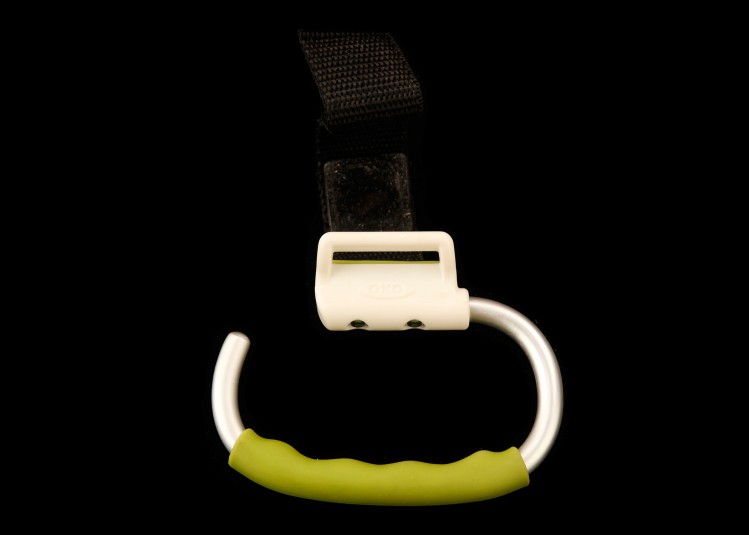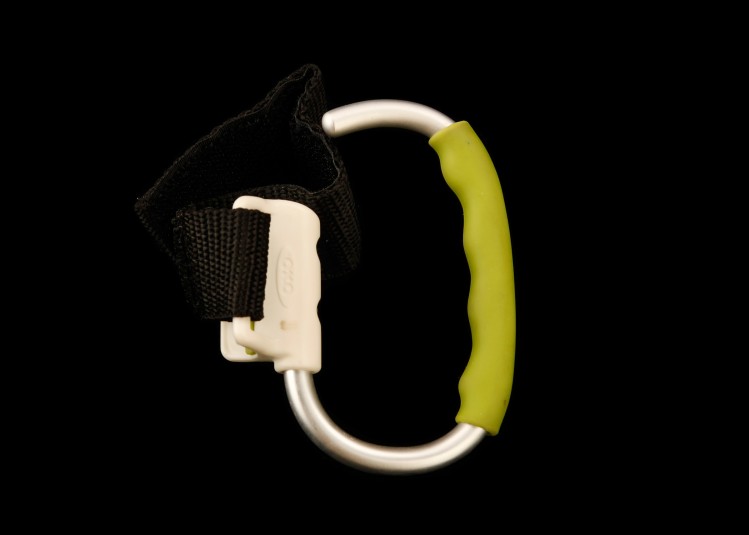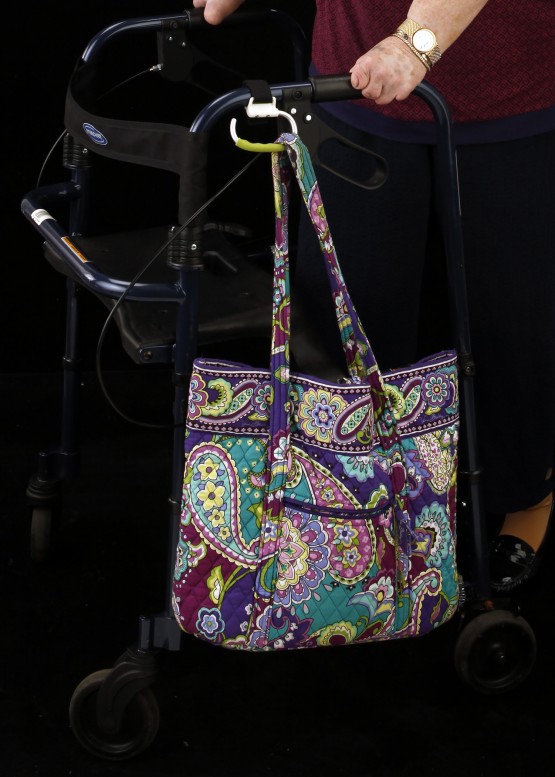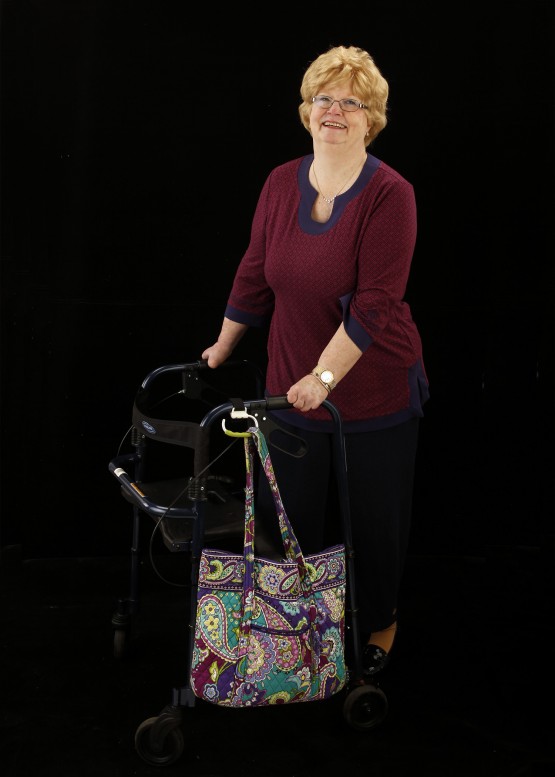Carabiners
For Cindy, carabiners are key for adapting her walker and scooter to carry her purse or plastic shopping bags.
Description
Carabiners, or spring-loaded hooks, have been used for over a hundred years by climbers, military personnel, sports activities, and for construction work of all kinds. But these simple, robust hooks, with their easy-open gate mechanisms, make it simple to attach all manner of objects—even heavy, cumbersome goods—to some other fixed object.
For Cindy, carabiners are key for adapting her walker and scooter to carry her purse or plastic shopping bags.
Cindy got this idea from observing parents using a specially-branded carabiner called the Mommy Hook. Designed as a fortified carabiner with foam padding for a stroller handle, it’s a perfect example of appropriating an existing simple technology for a widespread “assistive” use—lugging heavy gear while also caregiving for children. We see these kinds of dual uses frequently in assistive technologies.




